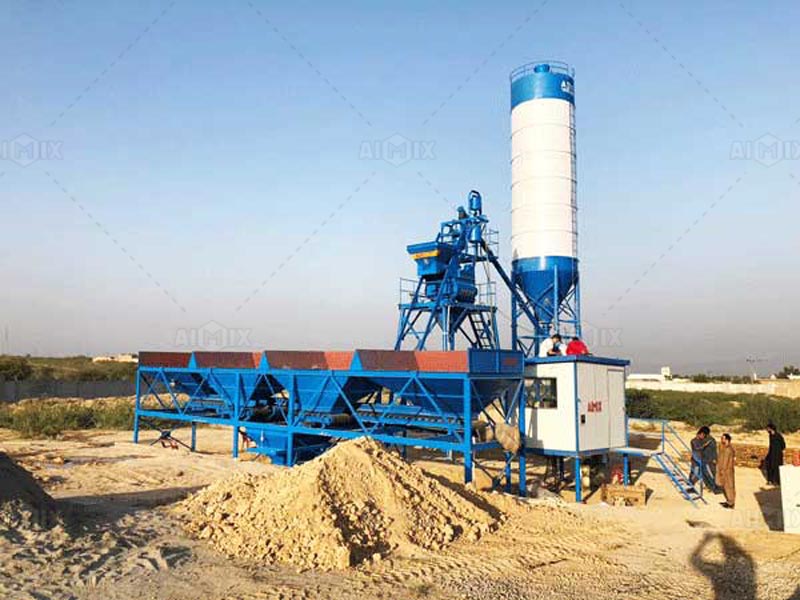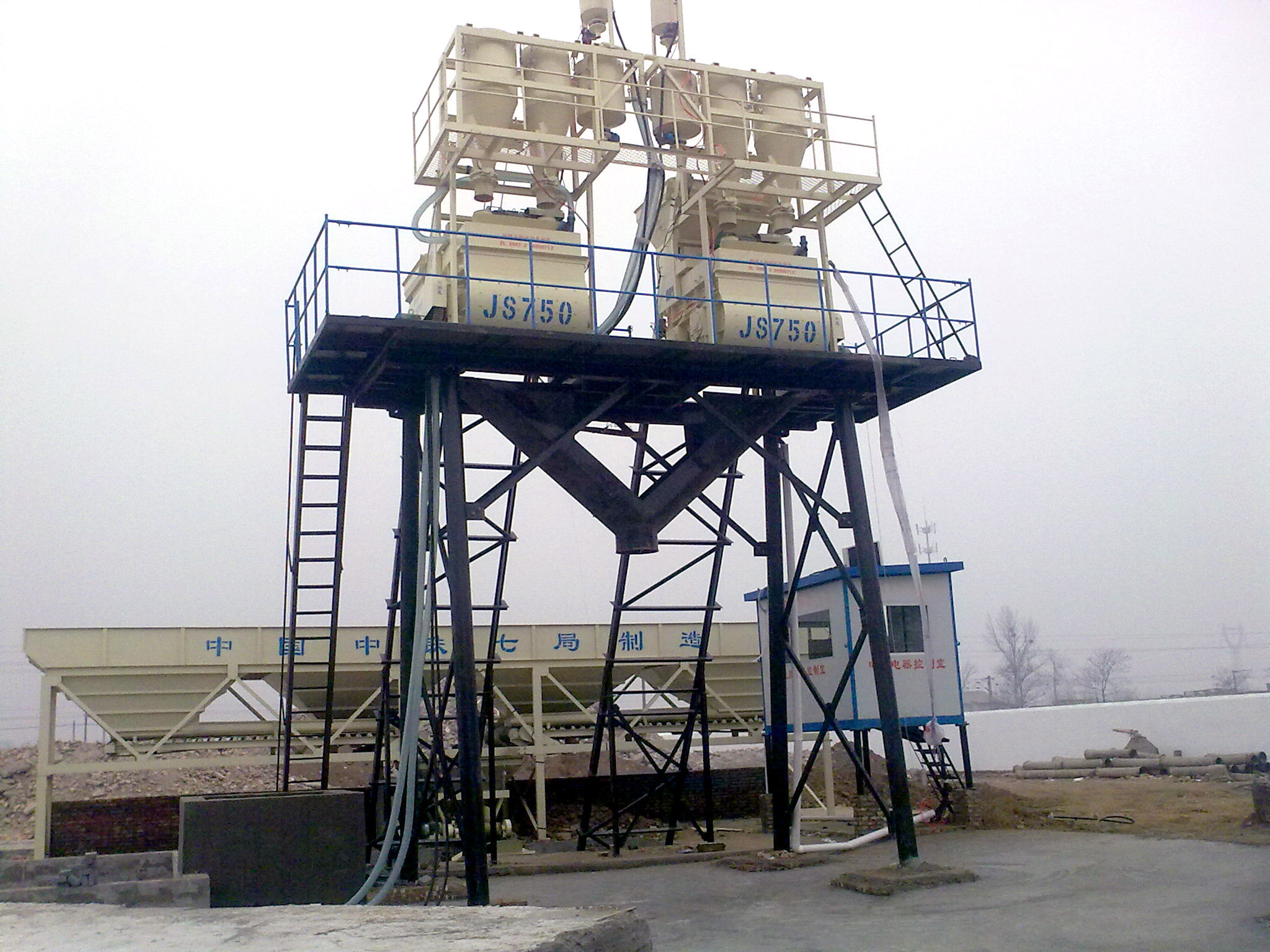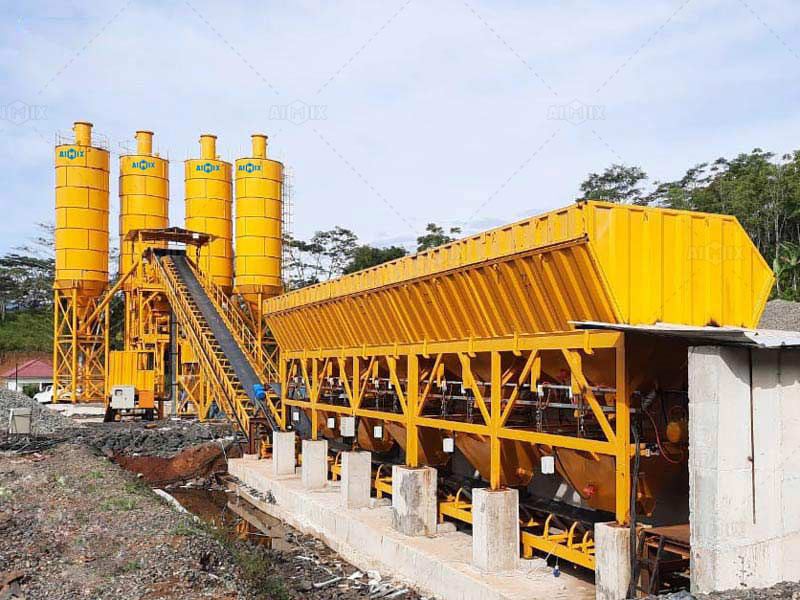Batching Plant Beton: Revolutionizing Concrete Production
Contents |
[edit] Introduction
Concrete is a fundamental material in the construction industry, serving as the backbone for various structures and infrastructure projects. To meet the growing demand for high-quality concrete, the use of batching plant beton has revolutionised concrete production. In this article, we will delve into the world of batching plant beton and explore how it has transformed the way concrete is manufactured, offering improved efficiency, consistency, and quality assurance.
[edit] Understanding batching plant beton
A batching plant beton, also known as a concrete batching plant, is a specialised facility designed to produce concrete by systematically combining various ingredients. It ensures precise measurement and proportioning of aggregates, cement, water, and additives according to specific mix designs. beton batching plant can range in size from small, mobile units to large, stationary plants, catering to different construction project requirements.
[edit] Components of a batching plant beton
A batching plant beton consists of several essential components that work together to produce high-quality concrete. These components include aggregate bins, conveyor belts, a weighing system, a mixer, cement and water silos, and control systems. Each component plays a crucial role in the batching and mixing process, ensuring accurate measurements, efficient material handling, and thorough mixing of the concrete.
[edit] Benefits of precise control over mixing process
One of the key advantages of batching plant beton is the precise control it offers over the mixing process. The plant allows for accurate measurement and proportioning of materials, ensuring the desired concrete mix design is achieved consistently. This level of control enables construction professionals to produce concrete with specific strength, durability, and workability characteristics, meeting project requirements and ensuring long-term performance.
[edit] Recycling and reuse of concrete waste
Concrete waste is a significant concern in construction projects. batching plant beton addresses this issue by offering solutions for recycling and reusing concrete waste. The plant can incorporate systems for crushing and reusing demolished concrete as recycled aggregates, reducing the need for virgin aggregates. This not only minimises waste but also conserves natural resources and reduces the environmental impact of concrete production.
[edit] Cost-effectiveness and productivity
Batching plant beton offers significant cost-effectiveness and improved productivity in concrete production. By ensuring accurate batching and proportioning of materials, the plant reduces material waste and the associated costs. Additionally, the efficient handling and mixing processes of the plant lead to increased production capacity and faster turnaround times, allowing for efficient project completion and cost savings.
[edit] Advancements in batching plant beton
As technology continues to advance, batching plant beton has undergone significant advancements. Innovations in design and features have further improved the efficiency and functionality of these plants. For instance, new plant designs incorporate features like multiple discharge points, allowing simultaneous production of different types of concrete. Integration of digital monitoring systems and data analysis capabilities enable real-time tracking of production parameters, facilitating better process control, and optimisation.
[edit] Conclusion
Batching plant beton has revolutionised concrete production in the construction industry. With advanced technology, precise control over the mixing process, and a focus on consistency and quality assurance, these plants have transformed the way concrete is manufactured. Additionally, batching plant beton embraces environmental considerations, promotes sustainability, and offers cost-effectiveness and improved productivity. By investing in batching plant di Indonesia, construction professionals can ensure the production of high-quality concrete that meets the specific requirements of each project, leading to successful and sustainable infrastructure development.
[edit] Related articles on Designing Buildings
- Bituminous mixing and laying plant.
- Cast-in-place concrete.
- Cement.
- Cherry pickers.
- Compressed air plant.
- Concrete.
- Concrete batching plants.
- Concrete boom pumps.
- Construction plant.
- Construction tools.
- Crane supports.
- Earth-moving plant.
- Equipment in buildings.
- Excavating plant.
- Forklift truck.
- Hoist.
- How to clean concrete.
- Mini concrete pumps.
- Power float.
- Precast concrete.
- Prestressed concrete.
- Reinforced concrete.
- Scabbler.
- Scaffolding.
- Six remarkable benefits of high pressure water jetting.
- Tool theft.
- Tremie.
- Types of crane.
- Types of roller.
Featured articles and news
CIOB report; a blueprint for SDGs and the built environment
Pairing the Sustainable Development Goals with projects.
Latest Build UK Building Safety Regime explainer published
Key elements in one short, now updated document.
UKGBC launch the UK Climate Resilience Roadmap
First guidance of its kind on direct climate impacts for the built environment and how it can adapt.
CLC Health, Safety and Wellbeing Strategy 2025
Launched by the Minister for Industry to look at fatalities on site, improving mental health and other issues.
One of the most impressive Victorian architects. Book review.
Common Assessment Standard now with building safety
New CAS update now includes mandatory building safety questions.
RTPI leader to become new CIOB Chief Executive Officer
Dr Victoria Hills MRTPI, FICE to take over after Caroline Gumble’s departure.
Social and affordable housing, a long term plan for delivery
The “Delivering a Decade of Renewal for Social and Affordable Housing” strategy sets out future path.
A change to adoptive architecture
Effects of global weather warming on architectural detailing, material choice and human interaction.
The proposed publicly owned and backed subsidiary of Homes England, to facilitate new homes.
How big is the problem and what can we do to mitigate the effects?
Overheating guidance and tools for building designers
A number of cool guides to help with the heat.
The UK's Modern Industrial Strategy: A 10 year plan
Previous consultation criticism, current key elements and general support with some persisting reservations.
Building Safety Regulator reforms
New roles, new staff and a new fast track service pave the way for a single construction regulator.
Architectural Technologist CPDs and Communications
CIAT CPD… and how you can do it!
Cooling centres and cool spaces
Managing extreme heat in cities by directing the public to places for heat stress relief and water sources.
Winter gardens: A brief history and warm variations
Extending the season with glass in different forms and terms.
Restoring Great Yarmouth's Winter Gardens
Transforming one of the least sustainable constructions imaginable.



























